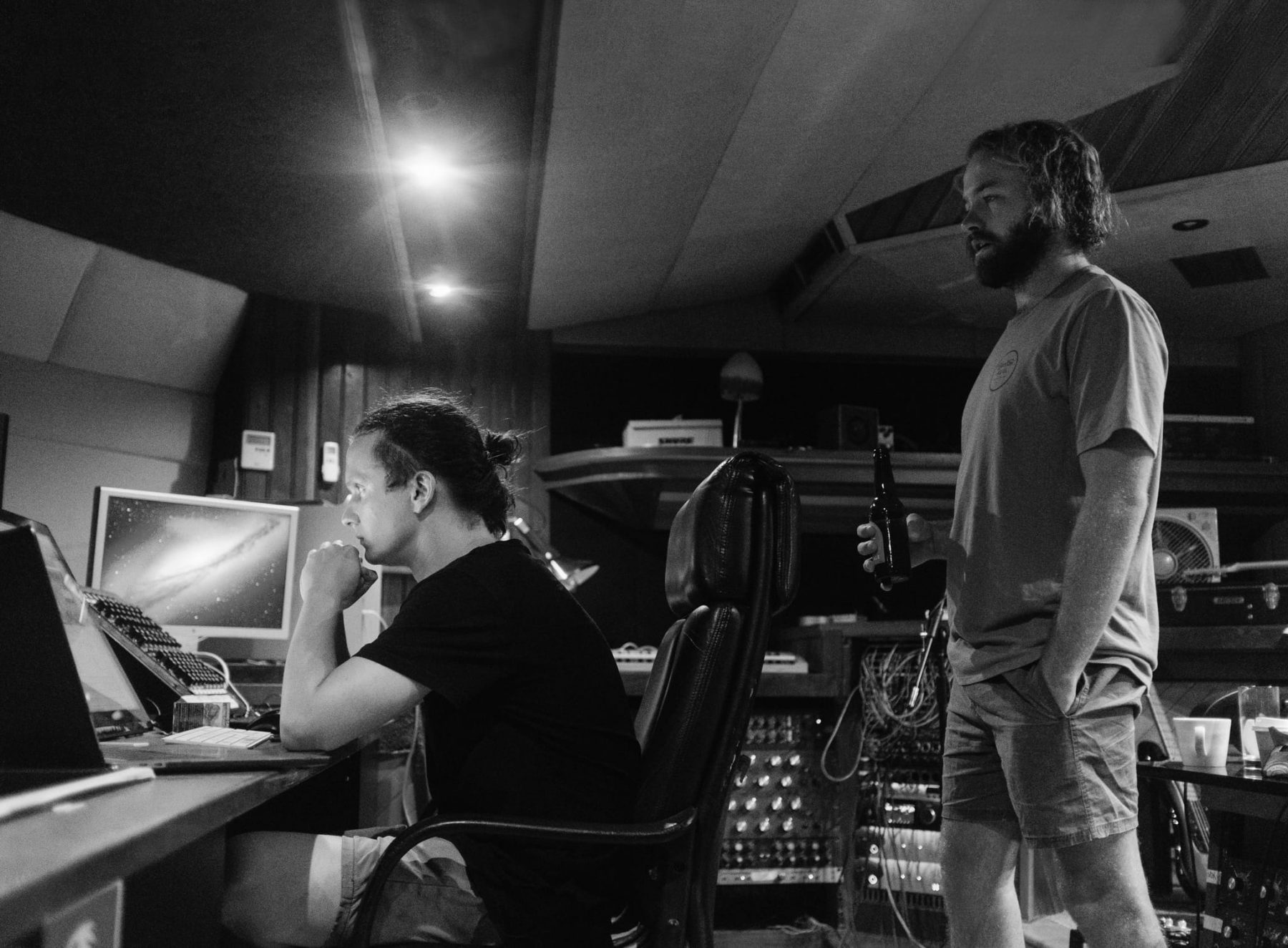
Riding the Triple J Wave
Ocean Alley took out top spot on this year’s Triple J Hottest 100 poll with a confident take on sleazy ’70s disco.

Artist: Ocean Alley
Album: Confidence
Does anyone else think it’s strange that over two million Aussie kids voted up a song that’s not only by a ‘real’ band, but also smoulders with sleazy ’70s vibe?
Confidence, by Ocean Alley, pinches wah out of the Marvin Gaye Let’s Get It On playbook and smacks of Lionel Richie/Commodore’s Easy, yet took out the number one spot on this year’s Triple J Hottest 100 countdown (along with three other Ocean Alley songs in the top 100). I guess it is all about confidence… baby! Great musicians, tracking live, minimal editing, nailing it within a few takes… it’s not what you’d expect, but isn’t it great that something funky and weird has come out on top this year.
“It’s nice to see the band thing coming back,” agreed Ocean Alley’s engineer, Callum Howell. “It’s also nice, because we don’t have an overproduced sound. Don’t get me wrong, I love that when it’s done right, like Sticky Fingers’ Land of Pleasure, which is one of my favourite records, but Ocean Alley sounds very much like a band.”
HOWELL LONG
Howell has been a long-time associate of Ocean Alley, and is now both their recording and mixing engineer, as well as their FOH engineer when they’re on the road. If you’ve heard Ocean Alley since their In Purple EP in 2015, then it’s been filtered through the ears and fingers of Howell.
Howell went to uni at JMC and started handling the in-house sound component of a music school in Crows Nest as a 19-year old. He worked around a bunch of studios, even doing tape transfers at 301, met the guys from Ocean Alley and eventually recorded that second EP at the now defunct Palmgrove Studios.
“Everyone’s been learning together as we’ve gone,” said Howell. They’ve now recorded an EP and two albums together — including their latest, Chiaroscuro — and when I catch up with Howell, he’s just back from six days at Rockinghorse Studios in Byron with the band.
Originally, the focus was on recording everything live as a band, explained Howell. “But the way they work, where half of the songs are written on a Tuesday and recorded on a Wednesday, means tracking everything live isn’t practical because we end up changing parts.” So while everything is set up and ready to go in a recording session, it’s more to jam out the ideas, before laying down beds and layering it up as they go. The reason it still sounds so live, is simple, said Callum, “They’re great musicians, because they came up as a live band. You can’t really pay for that experience. You tend to have the take within three or four attempts, and there’s minimal editing.”
Because they come from a live background, overdubs are kept to a minimum. “When we’re working in the studio, we’re considering if it’s possible to translate it live,” said Howell. “If they can’t do it live, they don’t want to do it. I’m with them on that, it’s important to be able to bring a song into the world as it was heard on the record. It’s always disappointing when it doesn’t match up because there was so much added in post. They’re adamantly against playing with tracks or a click. I’m sure they could do it, but it would suck the fun out of it for them.”

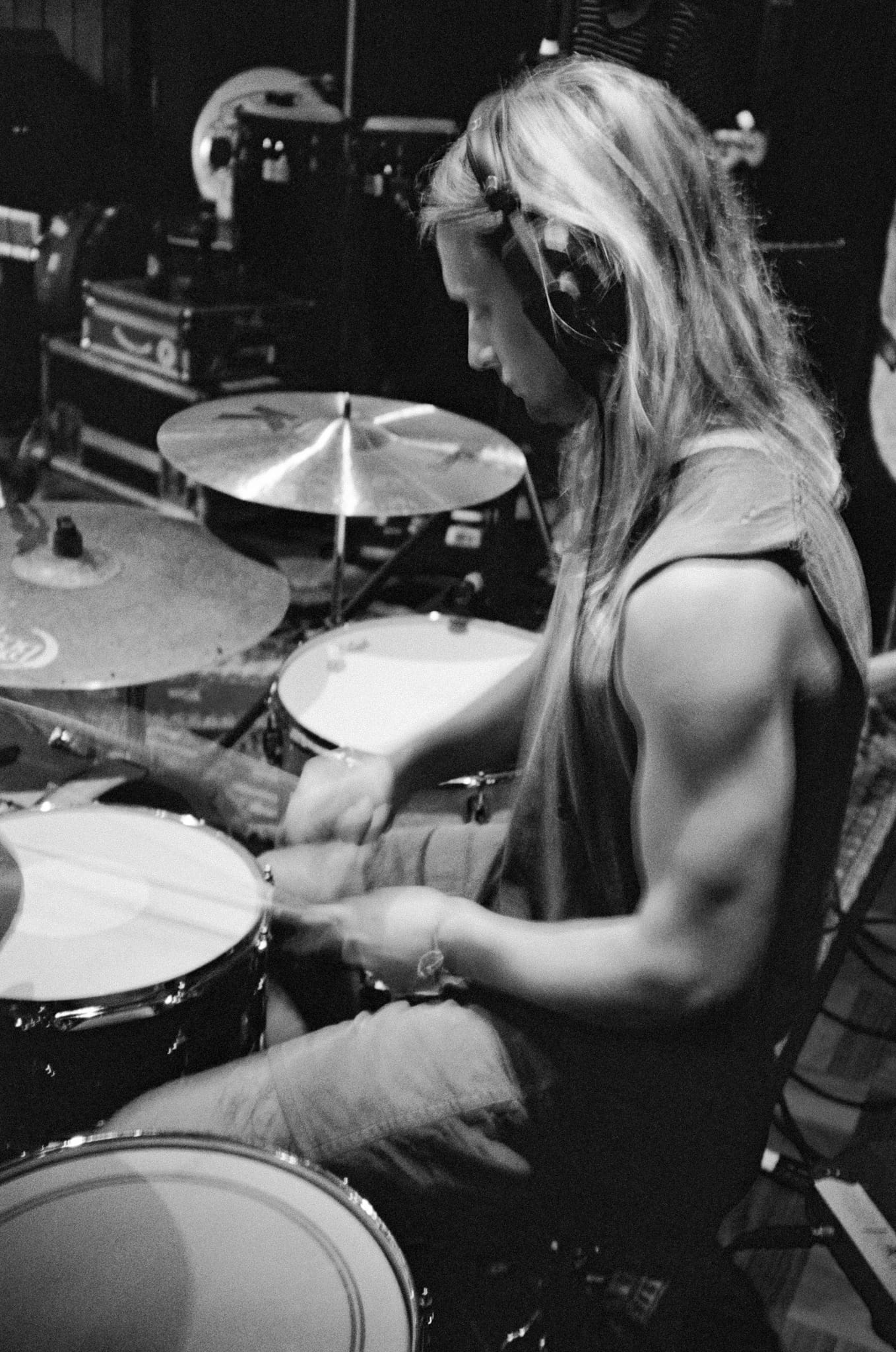
CONFIDENCE START
Confidence arrived in the same way a lot of Ocean Alley songs do, said Howell. “It was just a live jam, at about 10 o’clock at night. Lach started playing that wah-y keys sound, which is just a patch he found on the Korg SV-1. Everyone was asking, ‘What’s that?’ Then Baden came in with the line ‘It’s all about confidence baby!’ We looked at each other and knew we were onto something. Then everyone had it stuck in their heads for about two weeks, which is how we knew it was going to be catchy.”
After toying around with adding other sections to the basic tune, they decided to let it ride on the strength of the hook loop.
While the song comes off as heavily ’70s-inspired, Howell says it’s mostly because of Terry’s drumming style. Aesthetically, they don’t get too heavy into mimicking the sounds of the era. “We’re aware of them and it occasionally gets spoken about, but we’re not shooting for a throwback ’70s sound,” said Howell. “We try not to think about anything else other than what suits the song.”
Because they’re writing and recording almost simultaneously, Howell spends a lot of time getting the tone right to begin with, “moving mics around until it can fit in the mix without me having to do too much to it. It’s a better way to work for all of us, because we have a better idea of how it’s going to come out while tracking.”
For Confidence, that meant asking Nic to play a Jazz bass instead of his usual P Bass. “He hates his Jazz bass, because he thinks it’s too clicky,” said Howell. “But we needed some grit, sizzle and finger noise on that tone. As for miking it, it was a Neumann U87 on the amp, and a DI.”
Keeping with his philosophy of not chasing a particular aesthetic, rather than relying on a single ribbon mic for a crushed tone for the drums, a la Daptones, Howell employs a fairly standard multi-mic drum setup: Coles ribbons on overheads, Shure SM57s on snare, Josephson E22s on toms, an AKG D12 on kick in, a Rode K2 on kick out and some room mics. His concession to a more vintage tone is “we mainly try and get something going in the room sounds to glue the tracks/drums together. It probably lends itself to that ’70s aesthetic. Otherwise, it’s just heaps of delay on the vocals… all the time.”
HOTTEST 100 VOTING STATS
BOSS OF DELAY
He uses a bunch of reverb and delays: typically a gated Waves RVerb for drums — H-Verb and RVerb are his go-tos, and there’s plenty of UAD’s EMT plate on the record as well as a touch of the Bricasti M7 for vocals. The guitar reverb usually comes off a pedal or amp spring reverb. “Then I might add a little short room reverb around it to put it in a space,” said Howell. “The only things that get serious delay or reverb treatment are drums and vocals. There’s a lot of ambience on the vocals.”
His go-to delay is a physical Boss RE-20 pedal — which emulates a Roland Space Echo tape delay. “I have it in a pedal setup with a reamp box and a DI that I use for live and in the studio. Often it’s just to get the ideas down, and then half the time, they end up staying there.
“I like to get things off the surface and within arm’s reach. Things that keep the ideas going, that you can grab quickly during a moment of inspiration is super important. There’s nothing worse than having an idea then having to wait while you patch something in.” That goes for live as well, explained Howell. “I like to always have the feedback knob available. Especially for the overseas tours — when we’re walking into different venues with different consoles — it allows that extra bit of consistency to get it right wherever we go. As you can imagine, a set without delays in it is pretty dry.”
Back in the studio, in a similar way to how delays become their own character in dub, the RE-20 acts as a link between lead singer, Baden, and Howell. “We’ll typically have it on while tracking,” said Howell. “A lot of time it’s just something quick and fluttery on the pedal. I’ll often be tapping along, speeding it up and slowing it down for certain sections. We play off each other in that sense. He’ll hear something and work with it, or I’ll change the delay to match where he’s going. In terms of the big throws, that’s typically something I work out in my own time.”
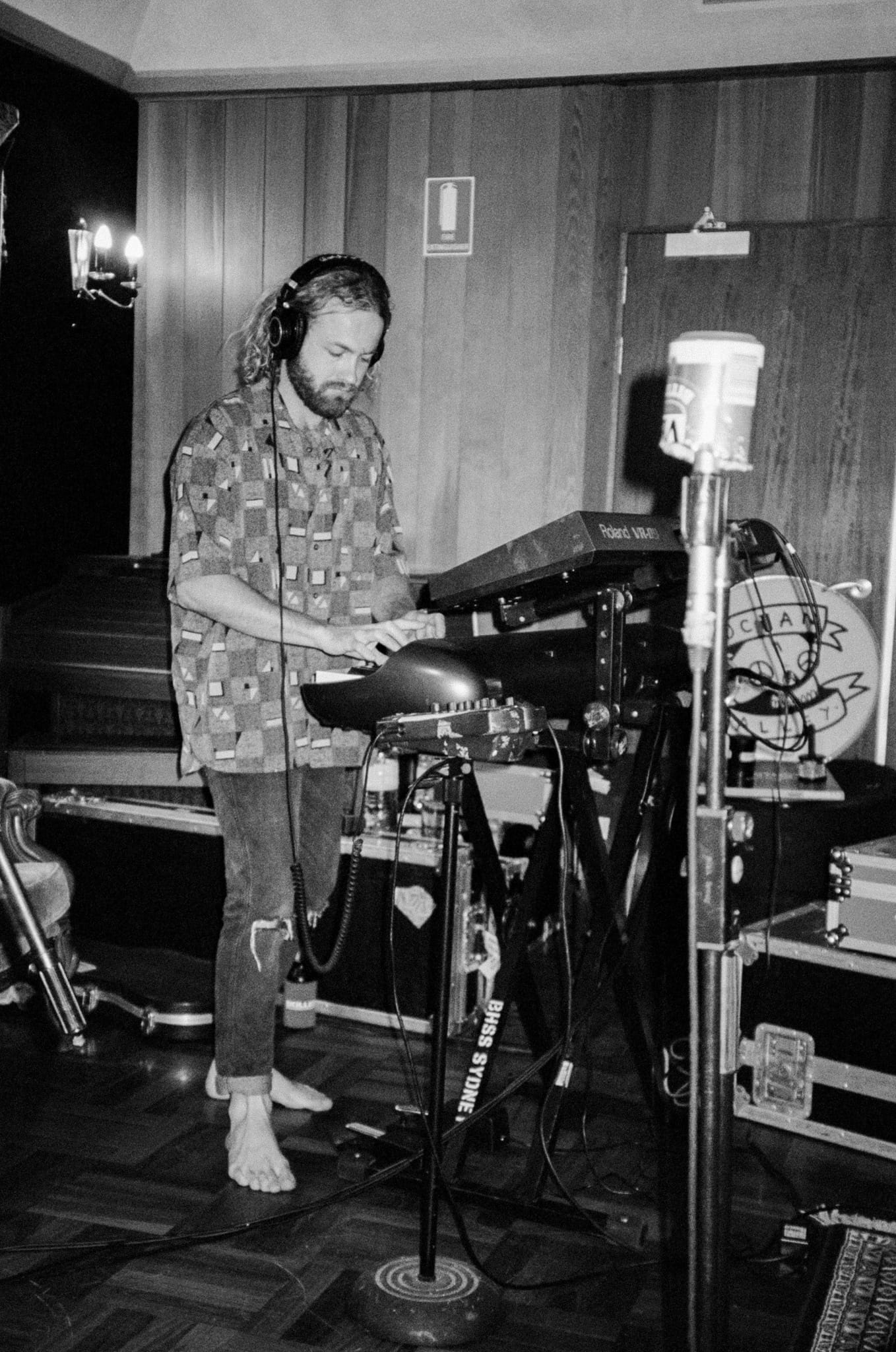
AUTOMATED SUCCESS
With most of the sounds locked in during tracking, it frees up Howell to put lots of movement into the mix — with level and space — just like he does live. “In a lot of songs, their parts will take on very different roles throughout the song. At the start they might be in a lead role, then they might drop back to an ambient swell for much of the song, before coming up for another bit,” he said. “So I use a lot of automation in Pro Tools — especially with delay times, cutting things off and the occasional cheeky incidental reverb.”
Taking out top spot on Triple J’s Hottest 100 put Ocean Alley in the same company as Kendrick Lamar and Flume. It’s a big deal in Australian music, but for Howell it was just great to get recognition for the years of work they’ve put in together. “It was amazing for everyone, because this was the first time we’d all been really happy with something we’d done together — both the engineering and musicality. Having that validated was really special for everyone.”
TAKING IT LIVE
Callum Howell: “We tour a Digico SD11 at the moment. I have a Waves server as well, all controlled off a laptop. I bring my little pedalboard (Boss RE-20 sandwiched between a reamp device and a DI). I used to be on larger format consoles — SD8 and SD10s. Then we did a European run where I was on an SD11 the whole time and that allowed me to get my whole show down to one page.
“It’s nice to have everything within arm’s reach. My delays are off by my right foot, there’s 12 faders on the surface and my laptop is right next to it. We’ve got a great stage crew, too, so our show is super consistent. We’ve finally managed to get it to the point where we can do a festival and I’m not pulling my hair out for the first 30 minutes.
“I’ve got a combo page with my drum group, bass group, the individual keyboards, three guitar groups (we dual mic all the guitar amps), then the vocals, and backing vocal group. I typically do the vocal processing on the groups so I can take the show into smaller venues without worrying about having heaps of compression in a wedge if I’m mixing monitors as well. Lastly, I have a tap delay fader control so I can pull it down if it gets wild, and a master fader. I can basically stay on that page the entire gig.”





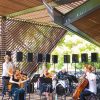




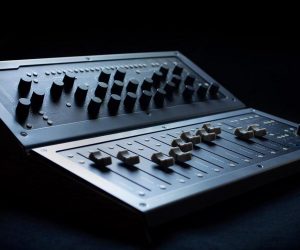

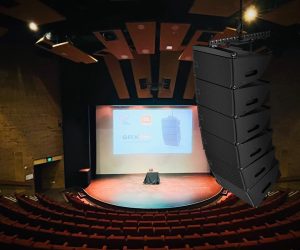


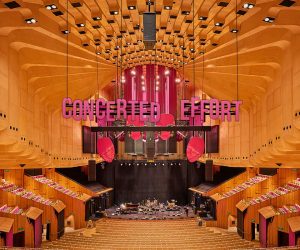



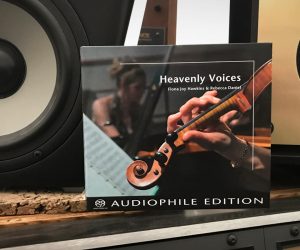




RESPONSES-
Pingback: Riding The Triple J Wave | Gear Report